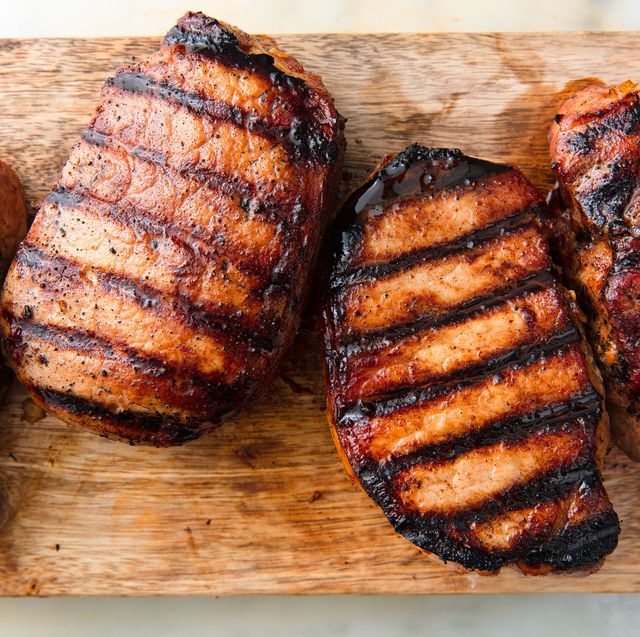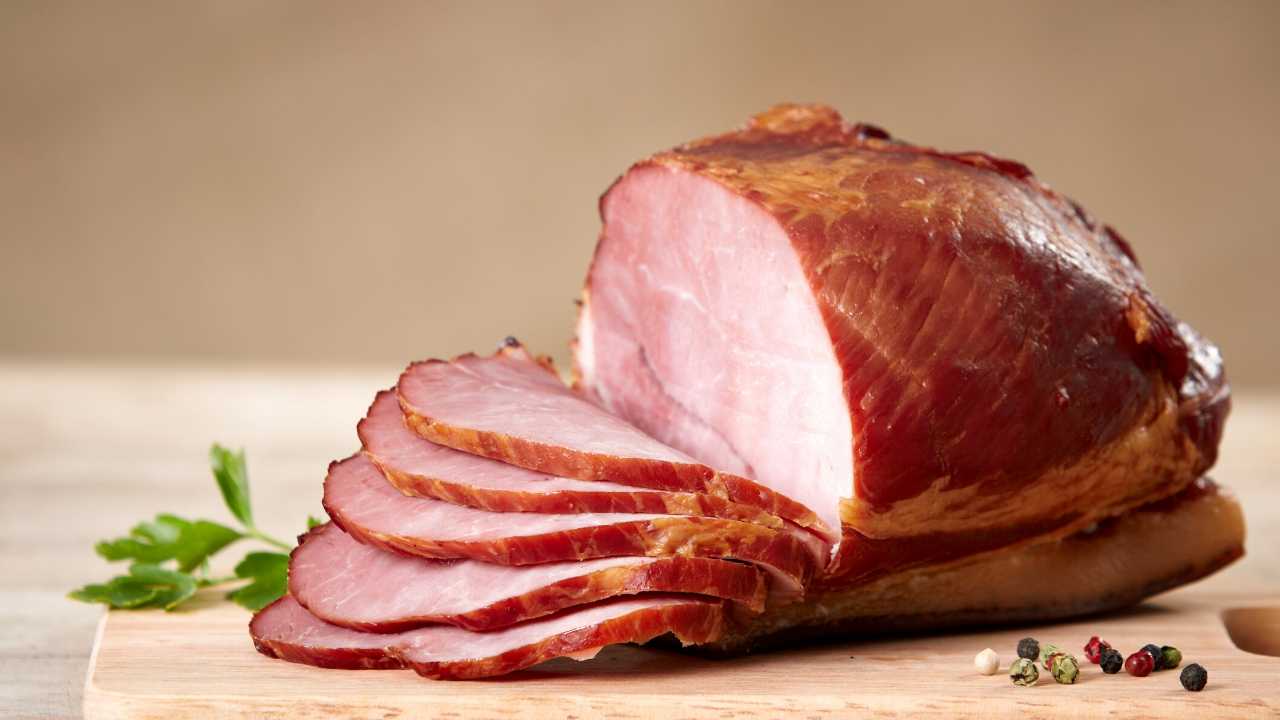
Cook food on the coals to get maximum heat. A charcoal grill that has large open vents can produce more heat. If your flames burn brightly, it means that there is sufficient oxygen. If your flames are low, there is not enough oxygen. If your food is burning quickly, you should close the vents. The heat is higher when the flames are higher. Low flames indicate that you are not using enough charcoal.
Intake vent
You may have encountered an intake vent when cooking on a charcoal barbecue. This device provides oxygen to the combustibles. This is the source of "fuel" for the grill. The larger the vent, the more oxygen will be allowed to enter the grill, raising the temperature. A key part of controlling the temperature is controlling the oxygen level.
The main way to control the temperature is by using the charcoal grill's intake ventilation. Near the vent, look for two arrows. If the arrows point at half-open, then the vent may be open. The top lid contains both the oxygen and exhaust dampers. By opening and closing them, you can control the temperature and intensity of the fire. In other words, the more open the vent, the hotter your fire will be.
The vents on the charcoal grill should be opened as much as possible. Vents left open can lead to charcoal that is hotter and more quickly burning. Vents should be closed to reduce heat buildup and the smoke. The bottom vent must be opened while the top one should stay closed. If you see too much smoke when cooking, only open the bottom one. But if it doesn't, you can always close it halfway or completely.
Another component to be considered is the outtake vent. Unlike the intake vent, the outtake vent pulls in oxygen from the air. The gases produced by wood and charcoal fires will cause the fire to be smothered if they are not vented correctly. Hence, it's best to adjust the intake vent before cooking to determine the right temperature. Beginners should start at the intake and then work their way up.
Exhaust vent
The exhaust vent of a charcoal grill regulates the amount air allowed to enter the cooking area. You will have a more intense fire if the vent is fully or partially open. However, if the vent is closed, less oxygen will be allowed to enter the cooking area. This will cause a smaller flame and starve the fire. When controlling exhaust vents, there are many things to consider.
The exhaust vent on a charcoal grill is designed to equalize the oxygen in the bottom chamber and the amount in the top chamber. To cook the perfect hamburger, you need to have control over both fuels. The charcoal grill exhaust vents are sometimes called dampers. They do not allow heat to escape, but instead control the temperature. Properly using the vent can enhance the taste and preserve the food's tenderness.
The exhaust vent is the most crucial part of a charcoal barbecue. If you want to get the most heat from the charcoal, you should cook it directly over the coals. However, if you want to control the temperature, you can use the 2-zone method. Two-zone cooking allows you to move the food around and cook in sections. To help regulate the flame, you can open the top vent if the food is too hot.
The intake damper (second part of the charcoal grill exhaust vent) is the other. This vent is located in the bottom of the charcoal grill. The oxygen required to burn charcoal and wood is reduced by opening the vent. The intake damper is usually located at the bottom of your grill. Open the vent and the fire may reach higher temperatures than the others. It makes the fire heat faster, and you can cook more food without lifting the lid.
Reduce intake

Charcoal grills allow air to pass through an intake vent. The grill will heat up, allowing oxygen to enter. An properly functioning charcoal grill intake diaphragm opens the grill's airways. An open intake damper allows for more oxygen to the grill. Closed vents restrict oxygen. Too much air can make coals too hot and cause food to burn. The coals will die if the damper is closed.
Vents or dampers are often called intake or exhaust vents. But they are exactly the same thing. An intake damper can found at the bottom of a charcoal-grill, while an exhale vent is found at the top. The exhaust and intake ports on charcoal grills are set up to draw oxygen as fuel. They should be kept open to ensure that your food is cooked at the correct temperature. If the charcoal grill gets too hot, it will produce more smoking than it can handle.
The temperature can also be adjusted by the charcoal grill intake damer. The more open the vent, the more oxygen can enter, and the less air, the cooler the grill will be. There are two dampers on charcoal grills. One is located on the lid, and the other in the bottom. The damper affects the temperature of charcoal grills, so make sure to leave it open for the best smoke flavor. The charcoal grill intake damper can take anywhere from 10-20 min to settle.
A charcoal grill intake damper keeps the fire in check. The charcoal will burn to ashes if it is not covered. You can easily put out a charcoal-grill by closing the vents. This prevents drafts, regulates temperature, and smothers the fire. This is also known to be a "fire triangular" system that regulates the temperature of your grill.
When the grill grates are still warm you can clean them.
It is easier to clean the grates of your grill while they are still warm rather than using harsh chemicals and metal tools. To clean your grill grates, soak them in a mixture of two cups vinegar and one cup baking soda. Allow the mixture to sit for about an hour and then scrub the grates thoroughly with a steel wool or a scouring pad. This method is safer, more efficient than other chemical solutions, and better.
After each cooking session, clean the grates of your grill. Using a high-quality stainless steel brush, scrape off any food that has browned on the grill grates. If possible, you can also use a separate scraper or the built-in scraper to remove burnt-on food. If the brush bristles become loose, remove them. After you have cleaned the grates well, you can rinse and dry them.
If you have cast-iron grates, you should make sure to wash them with soap and water. Grates that have a lot of grease buildup could result in them losing their nonstick properties. For grates to stay looking good, it is vital to clean them properly. This is also true for porcelain grill grates. They should be washed with soap and water. Vegetable oil can be used instead of a chemical cleaning solution to avoid rusting.
Aluminum foil can be used to scrub grill grates. The aluminum foil can be rolled into a circular shape that you can use with tongs. With a brush, remove any food particles stuck to the grill grates. After removing food from the grill, allow it to cool down completely before wiping it clean. This will allow you to ensure it is completely cleaned. You can also leave a charcoal grill on for a few more minutes.
Checking the vents

Vents on a charcoal grill regulate both the amount of oxygen reaching the charcoal and the interior temperature. You will learn how to use the vents correctly and master charcoal grilling. This will help you control the temperature, flavor and aroma of your food. To prevent fire, close all vents after you are done with cooking. After cooling down, store the grill.
If there has been heavy rain recently, it is common for the charcoal grill's lids to rust. The rust can block the grill's vent from opening and prevent oxygen from entering. This can lead either to a partially cooked meal or semi burned charcoal. A charcoal grill's vents are essential to the grill's proper functioning. Check them regularly to prevent any problems and make your cooking experience more enjoyable.
The function of a vent in a grill is to regulate how much oxygen gets in and out. If you cook in winter, when there is less oxygen, the bottom vent becomes more important. This will ensure that your food cooks faster. Temperature regulation is the purpose of a vent. If it's not working, you can use an aluminum pan with a similar effect. It won't alter the temperature as much, but it will help you cook more food.
The top vent also goes by the name of the exhaust damper. For charcoal grilling, it is essential to properly use the damper. You will get too much smoke if the damper is too close. It is essential to have the right settings in order to get the smoke you desire. The type of food you prepare should dictate how the vent damper is adjusted. It is also important to consider the type of charcoal grill that you use.
FAQ
How can I be hired as a chef?
It is possible to get a job in the kitchen by word of mouth. People in your circle of friends might know about restaurants that need additional staff. Also, restaurants often advertise openings on bulletin boards and websites.
What is the best way to learn to cook?
Cooking is one of those things that everyone should know how to do. You'll miss out on delicious meals if your skills are not up to par. First, find a recipe that appeals to you and then follow it closely. You'll then want to practice small adjustments until you feel confident making the dish. Next, you can cook for others. This will help you improve at cooking and also allow you to test your skills.
What is the best career path for someone who wants to be a chef? How can I get started in my career as an chef?
Apprenticeships are a great way to get started if you want to become a chef. Apprenticeships are a way to earn a living while you learn. After you complete your apprenticeship, it is possible to apply for a job as a sous-chef. Sous chefs oversee cooks and help them make salads and desserts. They also supervise the operation of the restaurant.
What can I learn about cooking?
You can find cooking classes all across the country. Many schools offer courses on baking, pastry, or wine tasting. If you want to learn more about cooking, you can enroll in a class at a local community college or vocational school, or attend one offered by a private institution.
Statistics
- On average, chefs earn $58,740 a year, according to the BLS. - learnhowtobecome.org
- under 10 Kids have been taught that there is special food just for them, and Fiese says that 10 percent of kids will throw a tantrum if they don't get the food they want. (washingtonpost.com)
- In the United States, the category is estimated at $23.2 billion annually and is growing faster than the market. (washingtonpost.com)
External Links
How To
How to make an omelet that is perfect
Omelets are a favorite breakfast food of mine. How can you make them perfectly? I've tried many different methods and recipes, but none of them seem to work! So I wanted to share some tips and tricks so that you can make delicious, fluffy omelets every morn.
We should first know that eggs are very temperamental ingredients when making omelets. You must get them fresh, organically, and keep them cold until you cook. If they are not kept cold enough, the whites won’t form properly. The yolks will also break down too quickly and become runny. This causes your omelets to look oddly colored. If you want to make omelets right away, it's best not to use eggs that are too cold.
You can also separate the egg before you add it to the pan. It is important not to allow any white to mix with the yolk as this could lead to the omelet becoming curdled.
The bottom part of an egg that is added directly to the stovetop might be burned, which could cause a ruined texture in your omelet. Instead, heat the egg for 10 seconds in the microwave before placing it in the pan. The microwave heat is sufficient to cook the egg without overcooking.
Next, let us talk about how to mix the eggs. You want to mix the eggs thoroughly before you add them. To do this, grab the bowl of the mixer and turn it upside down. Then, vigorously shake the bowl. This allows the air to be whipped and the egg to be mixed thoroughly.
Now comes the fun part - pouring the milk into the mixture. First, pour half of the milk into the beaten eggs and then fold the eggs gently into the remaining milk. Do not worry if you see streaks of egg; they will disappear when the omelet is flipped.
After folding the eggs fold the pan onto medium heat. When the oil starts to hot, wait for the pan to cook. Once the oil starts getting hot, add 1/4 cup of butter to the pan and swirl it around to coat the entire surface of the pan. The lid should be carefully opened. Sprinkle salt in the pan. A pinch of salt will prevent your omelet from sticking in the pan.
Once the omelet has formed completely, cover the pan and let it set for a few minutes. Flip the omelet with a spatula, or flip it upside down. Cook the other side for about a minute. Remove the omelet from the pan and serve immediately.
This recipe is best made with whole milk. However, it can also be used with skimmed milk.